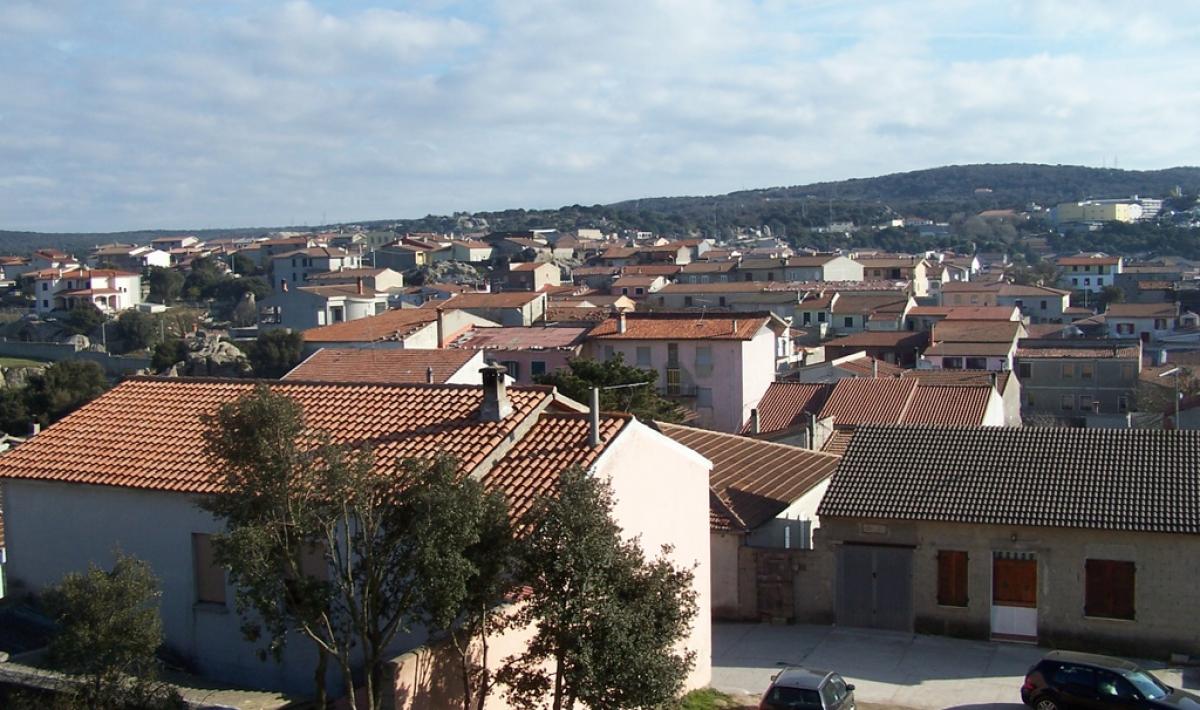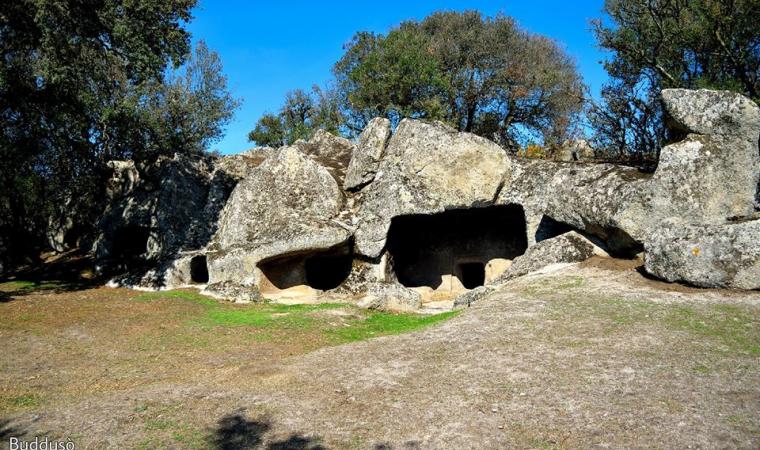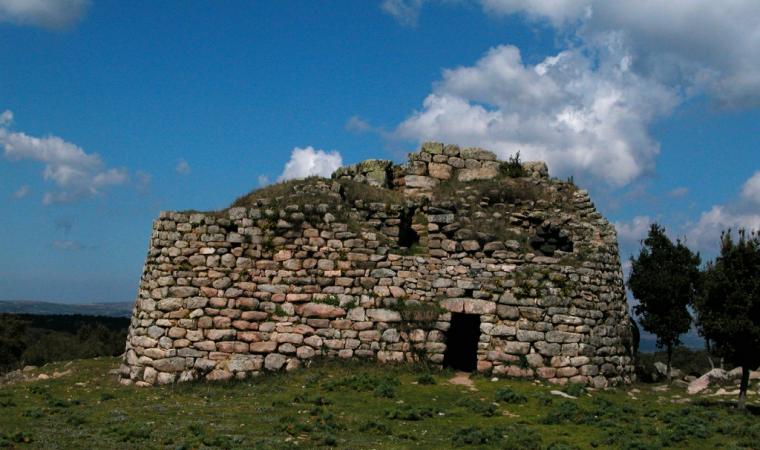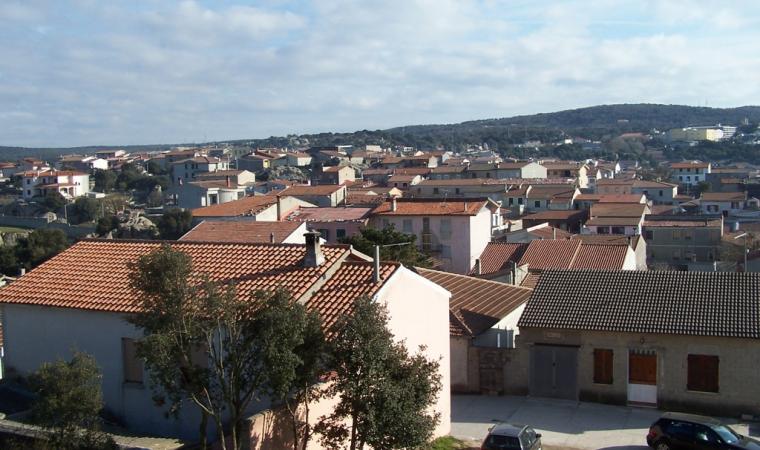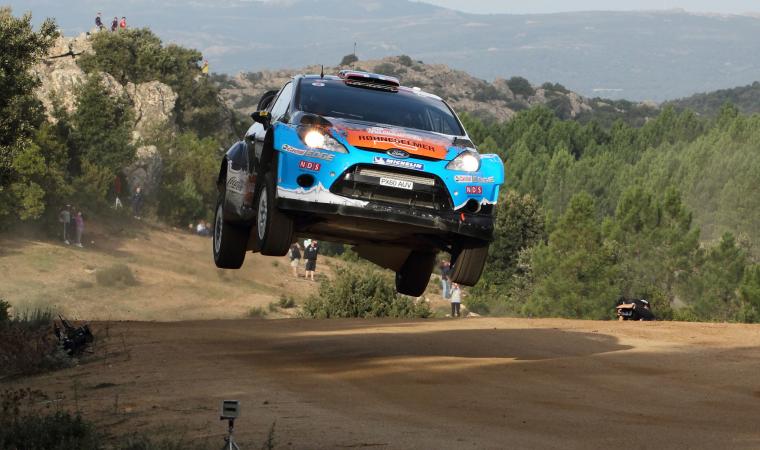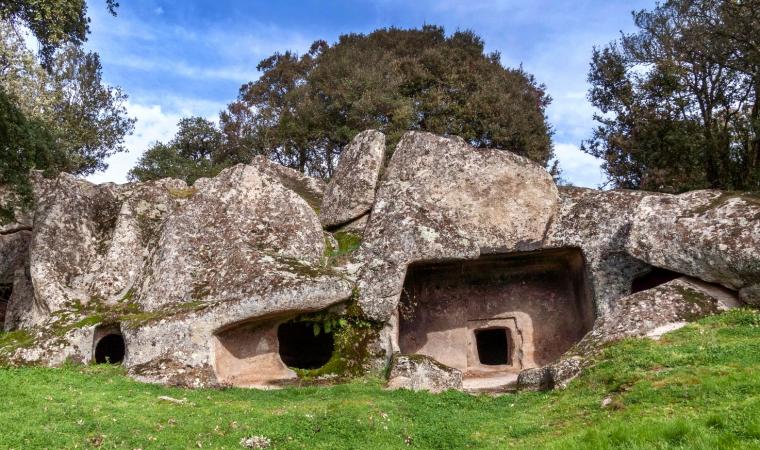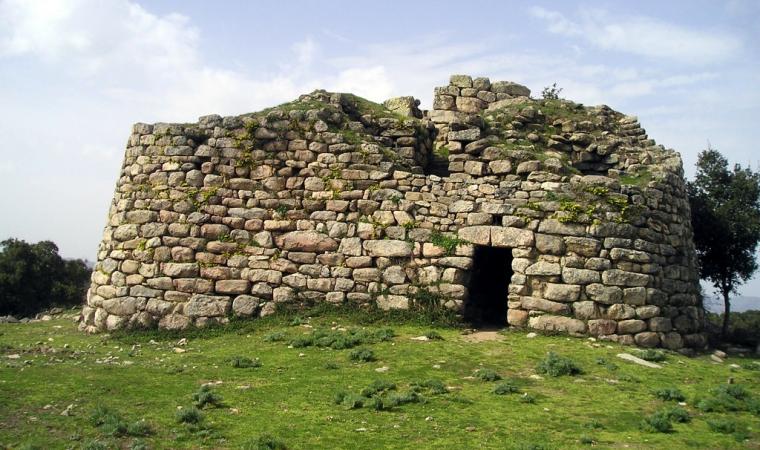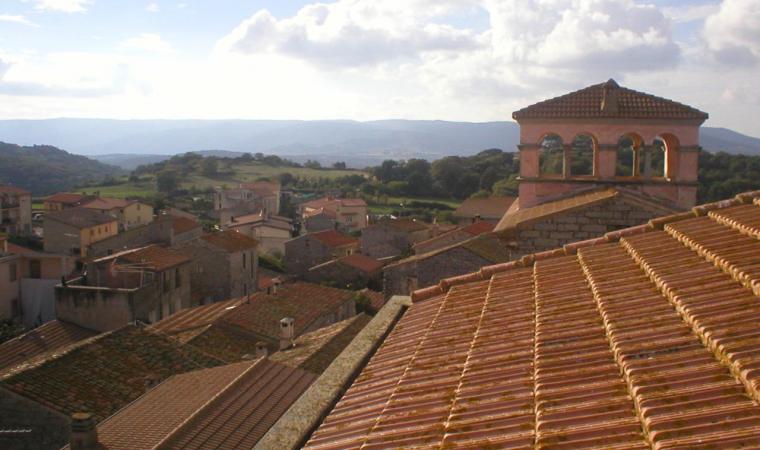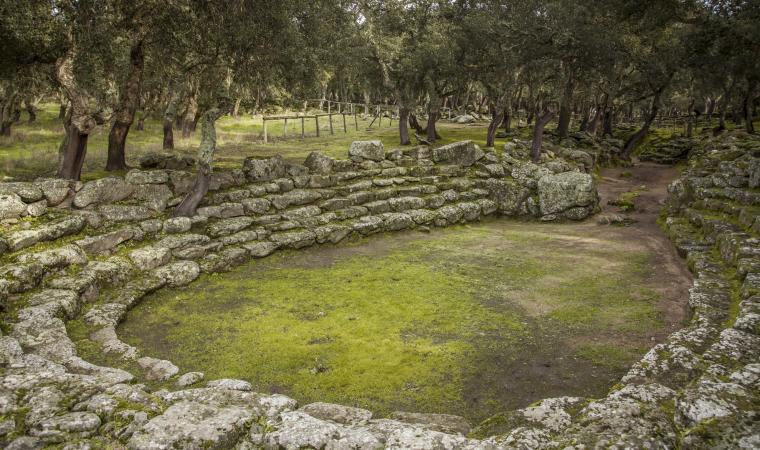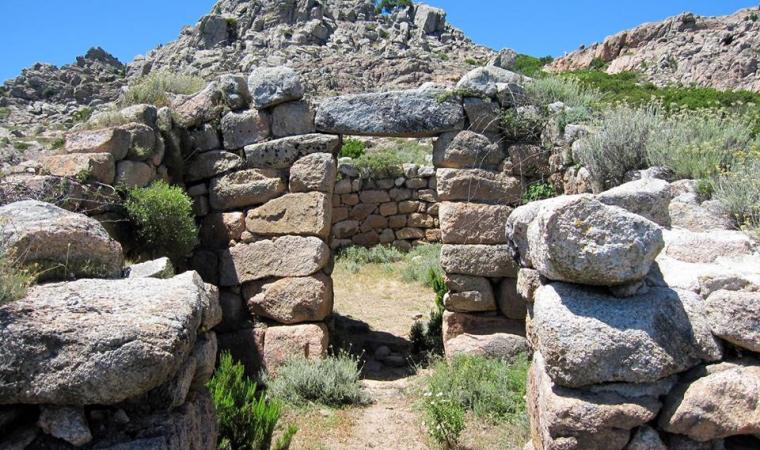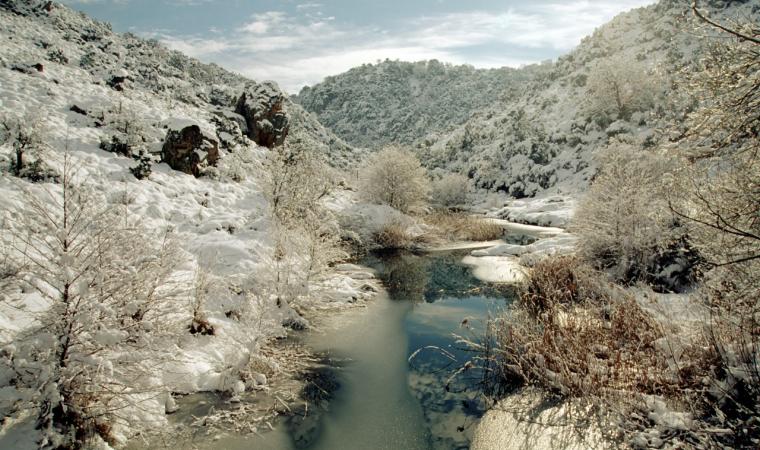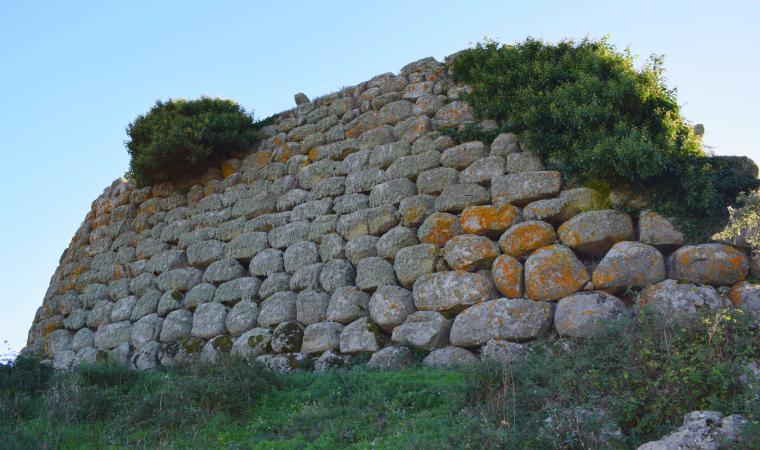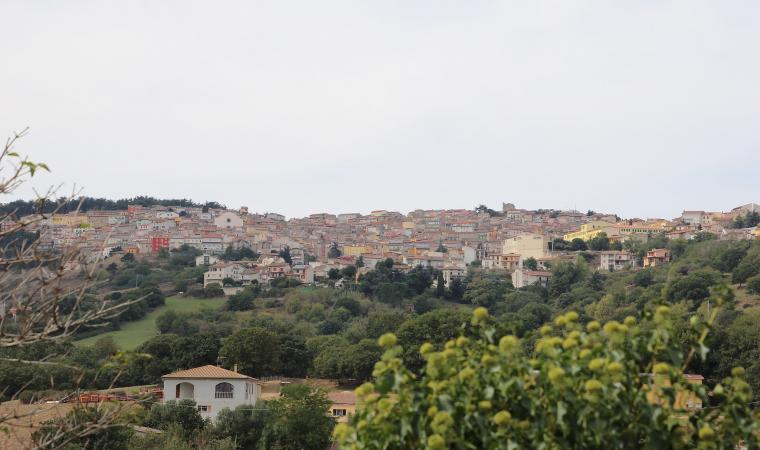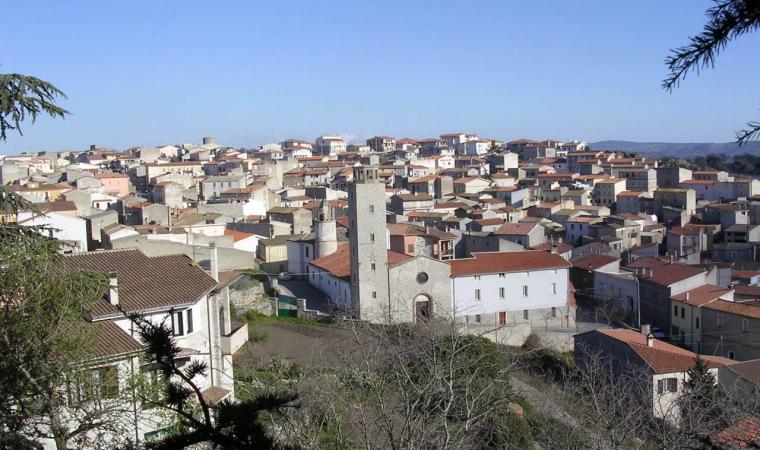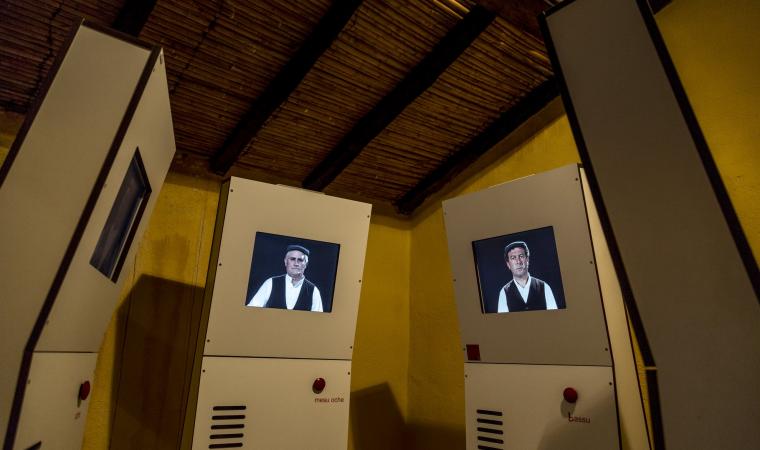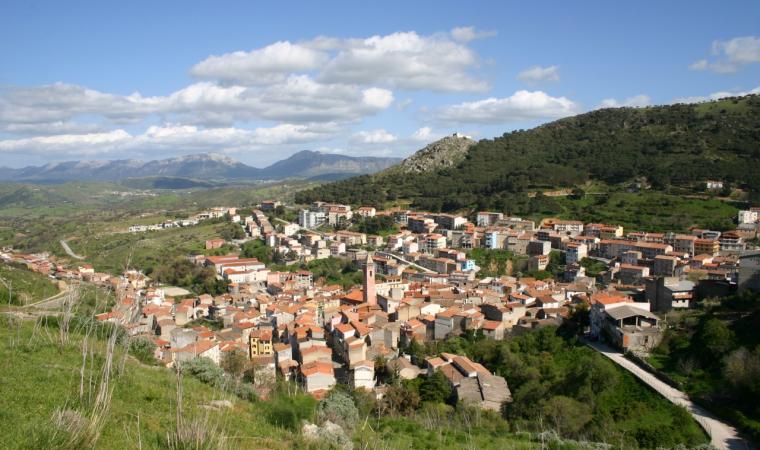Rising 750 metres above sea level in the southern part of the homonymous plateau, Buddusò is in the Monte Acuto. The village perhaps derives its name from the moniker biddisò (sparrow), after having been initially known as Gullusò from the 14th century. Its territory, most famous for its white granite quarries, is covered with pastures, cork oaks and dense Mediterranean scrub. It is traversed by the Rio Mannu which runs into the Lago di Coghinas and the Rio Altana that flows into the Tyrrhenian Sea. The territory, which regularly hosts special stages of the world Rally Italia Sardegna, was inhabited as of the Neolithic period, as is evidenced by a dozen Domus de Janas within the town and over 50 collections in necropolis, scattered throughout the countryside. The most famous are the Domus de Borucca and the necropolis of Ludurru, 200 metres from the village, with hypogaea excavated in a single granite outcrop.
The successive period is abundantly ‘recounted’ by 32 nuraghe. Some of the complexes are well preserved, in all the Loelle nuraghe, located seven kilometres from the village and comprised of worked blocks, bearing a trefoil shape steps and corridors running over two internal floors. Characteristic is an underground chamber (perhaps a cellar), whilst the tower played the role of overseeing a village. Alongside are two small Giants' tombs. Also noteworthy is the village of Sos Muros, which retains an intact well. 15 kilometres from Buddusò, in the bordering territory of Bitti, sits one of the most important nuraghe complexes of all, the village-sanctuary Su Romanzesu. During the Roman age, the Buddusò area was the site of a station on the Karalis road - the Forum Traiani-Olbia. There are still traces of the inhabited area of Caput Tyrsi near the springs of the Tirso river. The Iberian domination, on the other hand, is evident in Buddusò from the baroque church of San Quirico. The other main churches are the parish church of Santa Anastasia and the rural one of Santa Reparata, celebrated with a festival in early September.
The town, with almost four thousand inhabitants, witnessed an economic development in the last few decades of the 20th century thanks to the extraction and processing of cork and granite, used all over the world. Clearly, this is also the material used to construct the traditional houses. Many statues are to be seen around the town and in the modern art museum, built in the twenty-year period from 1980 to 2000, during the sessions of the International Wood and Granite Symposium, in which artists from all over the world competed throughout the streets and in the piazzas, in the shaping of granite and wood. In the historic centre, Villa Doneddu in neo-Gothic style can also be admired.

